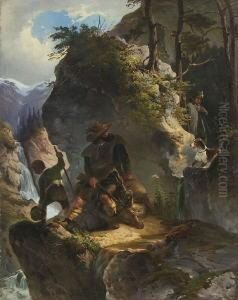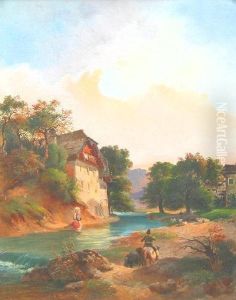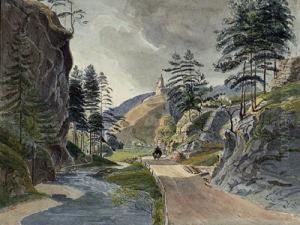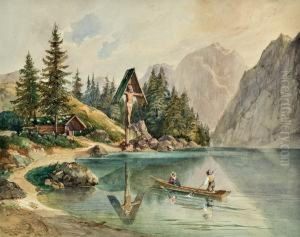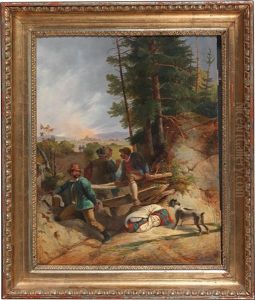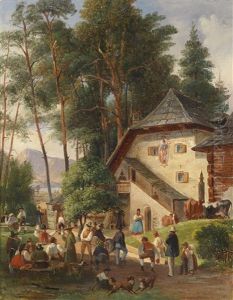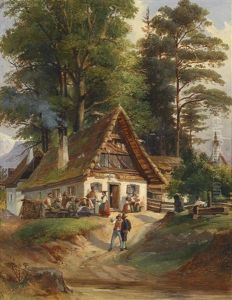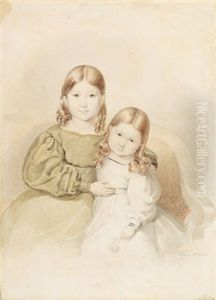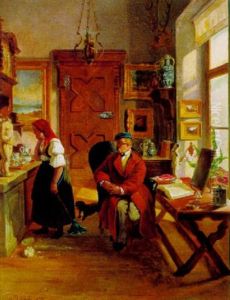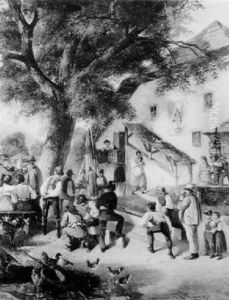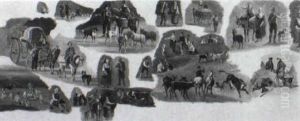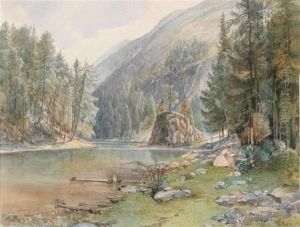Johann Nepomuk Passini Paintings
Johann Nepomuk Passini was an Austrian lithographer and painter, born on September 16, 1798, in Vienna, Austria. He emerged during a period of significant artistic innovation in Europe, particularly within the realms of lithography and painting. Passini's work is characterized by its meticulous detail, vibrant storytelling, and a keen interest in capturing the essence of daily life, as well as architectural and historical subjects. His contributions to art span several decades of the 19th century, a time when Europe was undergoing rapid changes due to industrialization, political upheavals, and intellectual movements.
Passini received his initial artistic training in Vienna, where he was exposed to a rich environment of classical and contemporary art. He further honed his skills in Italy, a journey that was quite common among artists of his time, seeking inspiration from the Renaissance masters and the picturesque landscapes and cityscapes. Italy, with its rich historical legacy and its vibrant urban and rural life, had a profound impact on Passini's artistic direction. He became particularly adept at lithography, a printmaking technique that was gaining popularity for its ability to reproduce artworks and disseminate them widely. Through lithography, Passini was able to capture intricate details of his subjects, making his works highly sought after by collectors and the general public alike.
Throughout his career, Passini dedicated himself to both teaching and creating art. He became a respected figure in the artistic community, contributing significantly to the cultural life of Vienna and beyond. His works often depict scenes of everyday life, imbued with a sense of realism and an eye for detail that invites viewers to step into the world he has captured on canvas or stone. Passini's architectural drawings and paintings, particularly those featuring historical buildings and city views, are celebrated for their accuracy and beauty, serving as valuable documents of the era's urban landscape.
Johann Nepomuk Passini passed away on May 17, 1874, leaving behind a legacy that has continued to influence artists and captivate art enthusiasts. His dedication to his craft and his ability to convey the beauty and complexity of the world around him have secured his place in the annals of 19th-century European art. Today, his works can be found in museums, galleries, and private collections, where they continue to be appreciated for their historical value and aesthetic appeal.
